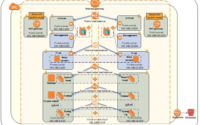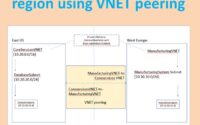June 26, 2020
Azure AZ-900 Exam Study Notes Part – 2
This “Azure AZ-900 Exam Study Notes Part – 2” blog series covers the continuation of the questions and answers I used for brainstorming and self-learning.
AZ-900 Exam Study Notes – Part 2
| 21 | What is an Azure Function? |
| A | Azure Functions are single-task services that can take input, process it, and then die. Furthermore, it is a stand-alone product that doesn’t rely on other Azure services. |
| 22 | Which definition best describes compute on Microsoft Azure? |
| A | Compute is one of the three foundational components of cloud computing. The other two are network and storage. This means that any service that performs a compute function on Azure is part of “Compute” on Azure. |
| 23 | Which cloud service model do Virtual Machines belong to? |
| A | It is part of IaaS. Infrastructure-as-a-Service includes services that emulate hardware, such as Virtual Machines, networks and storage. |
| 24 | What is the Text Analysis API in Azure Machine Learning? |
| A | Text Analysis API is a set of web services that can be used for text analysis. It is used to analyze unstructured text for sentiment analysis and keyphrase extraction. |
| 25 | What are the advantages of Azure Queue Storage? |
| A | Queue storage enables message queueing for large workloads in a simple, cost-effective, and durable manner |
| 26 | What are the two kinds of Azure Web Service roles? |
| A | Web Roles and Worker Roles |
| 27 | What is a fully managed platform on Azure |
| A | A managed platform means the provider manages the infrastructure layer, such as VMs, disks, networks, and more. For instance, you only have to focus on the core functionality of your application. |
| 28 | What is Azure Service Fabric? |
| A | Service Fabric provides a platform that makes the process of developing microservices and managing the application lifecycle easier. |
| 29 | What are the three kinds of App Service? |
| A | Azure provides three types of app services depending on your scenario. 1) Web Apps 2) Web Apps for Containers and 3) API Apps all cover a specific use case. |
| 30 | What is the Azure Traffic Manager? |
| A | Azure Traffic Manager is a traffic load balancer that enables users to provide high availability and responsiveness by distributing traffic in an optimal manner across global Azure regions |
| 31 | What is a scale set? |
| A | Scale sets are used to scale an application up or down by quickly adding or removing VMs. Moreover, the VMs in the scale set are identical and can be created very fast. |
| 32 | Azure SDK is available for which development platforms? |
| A | The Azure SDK is available for several development platforms, including Microsoft, NET, Java, Node.js, Python, Ruby, and PHP. Furthermore, you can download the most recent version of the SDK for each of them from the Azure Downloads page. |
| 33 | For Internet-facing VMs to qualify for a 99.95 percent external connectivity service level agreement (SLA), should they be part of the same availability set? |
| A | Yes |
| 34 | Overlapping address spaces with on-premises will prevent you from connecting these networks together if you want to do so later. |
| A | Yes |
| 35 | What type of connection can you establish to the VM in Azure by default? |
| A | You can establish an RDP connection to Windows-based VMs and a Secure Shell (SSH) connection to Linux-based VMs. |
| 36 | By default, how many slots are available under Azure Cloud Service? |
| A | Azure offers two deployment environments. 1) Staging Environment 2) Production Environment |
| 37 | Does Microsoft Azure log any trails of user actions? |
| A | Yes |
| 38 | You have successfully authenticated and connected to your Azure subscription in an Azure CLI session. Which Azure CLI command should you run if you want to manage Azure Resource Manager resources? |
| A | You should use the azure config mode arm command. This allows you to switch from the default classic deployment mode to the Azure Resource Manager mode |
| 39 | What is Queue storage used for? |
| A | Azure Queue storage provides cloud messaging between application components. Queue storage delivers asynchronous messaging for communication between application components, whether they are running in the cloud, on the desktop, on an on-premises server, or on a mobile device. Queue storage also supports managing asynchronous tasks and building process work flows. |
| 40 | Which of the following is a tool in Azure to templatize the infrastructure? |
| A | Azure Resource Manager allows you to provision your applications using a declarative template. In a single template, you can deploy multiple services along with their dependencies. You use the same template to repeatedly deploy your application during every stage of the application lifecycle. |
Summary & Next Steps
For passing the exam, on top of this blog series, I strongly urge you to create an account in the Azure portal and get some real-time experience on the topic. For more information, please visit Microsoft sites AZ-900 and Azure fundamentals. Also” Azure AZ-900 Exam Study Notes Part – 1” in case if you missed the part-1 of the study notes. Happy learning
3 Comments


